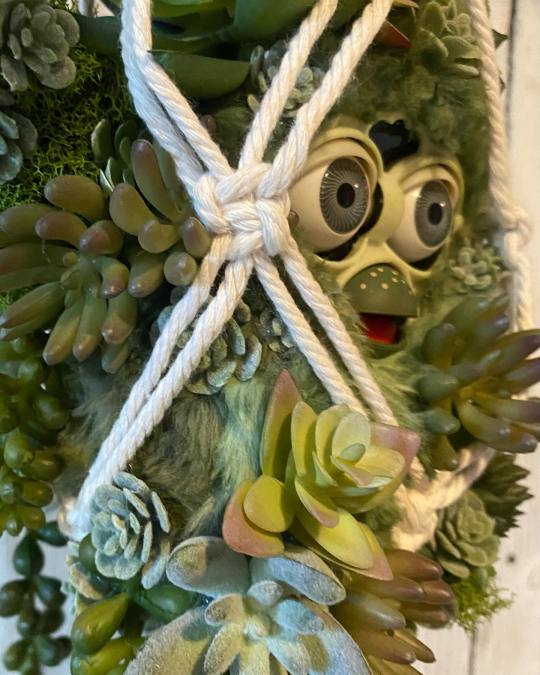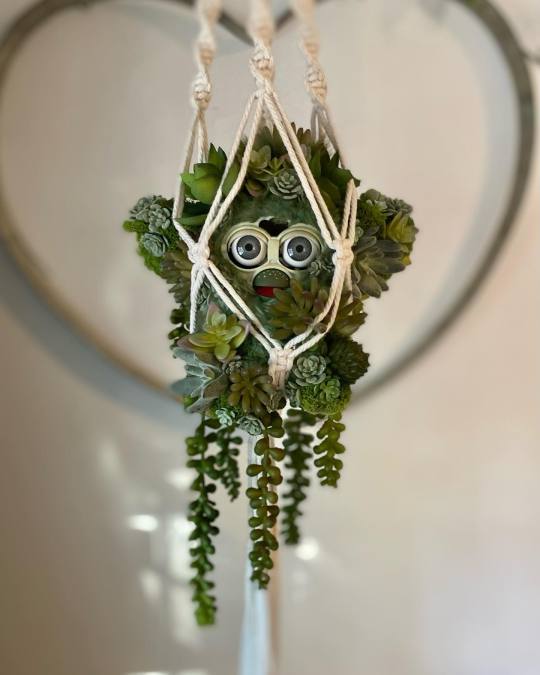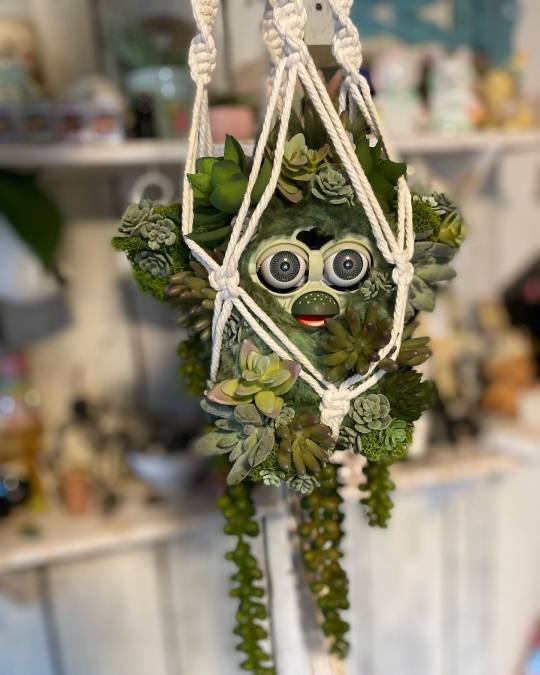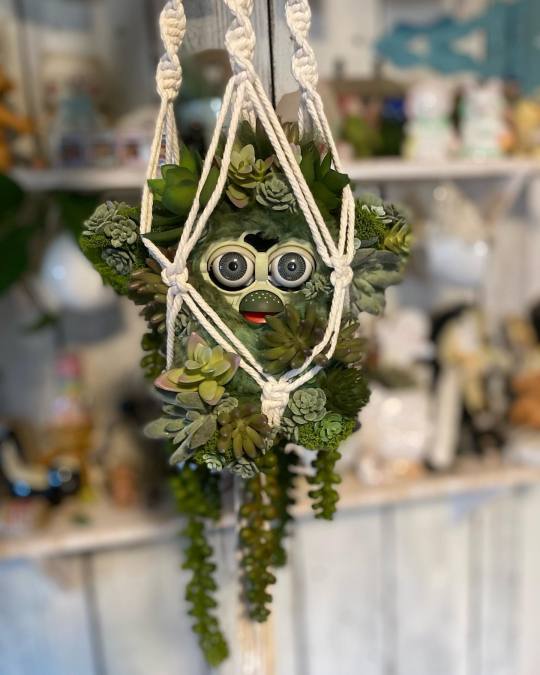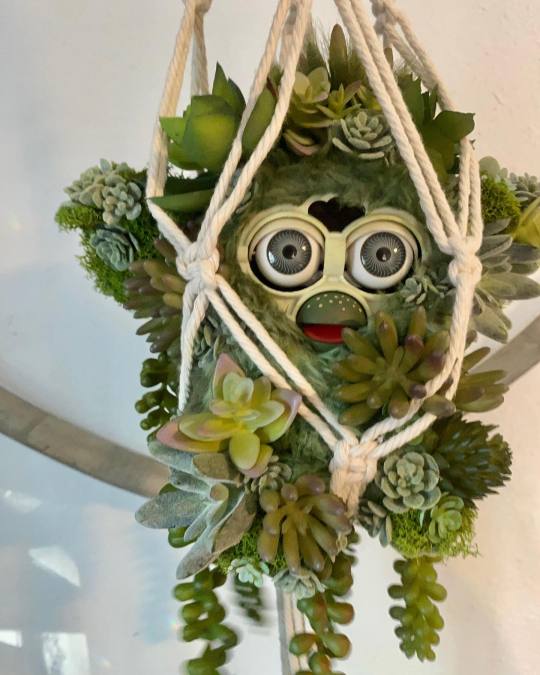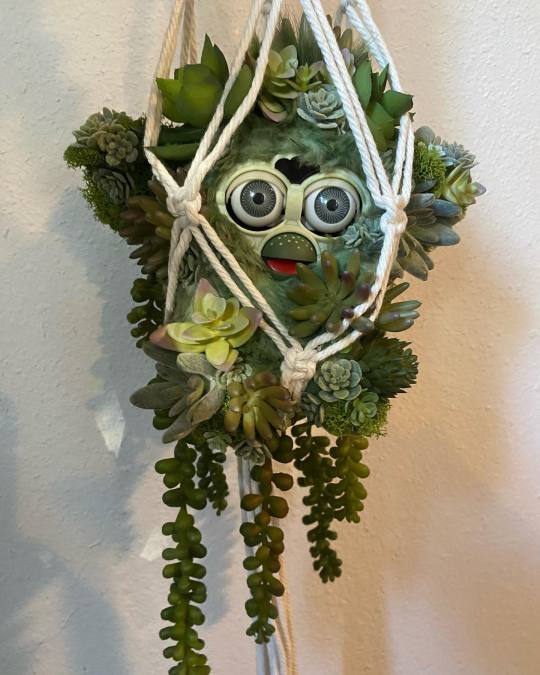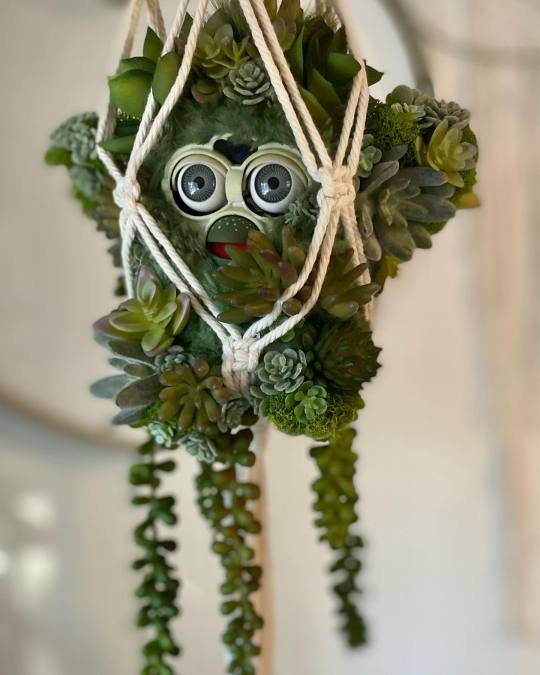Don't wanna be here? Send us removal request.
Text

BTS groovin
1 note
·
View note
Text
Entry 34
Blood fan
Caro nidum
If hell is a real place, it's full of these things. Found in shallow, humid caves across the planet, Caro nidum or the Blood Fan is a medium sized fern with thick, fleshy, gel-like leaves that share a texture with coagulated animal fat each roughly a foot long and half an inch thick. In addition to its appearance and vile smell, the most terrifying and disgusting part of this plant is its importance in the life cycle of Siphonus Cruor, an insect like parasite that has been known to work in swarms to completely drain the blood of even the megafauna of this planet. Even a single bite from Siphonus Cruor can continue to bleed for days after the parisite has been removed and is a common method of transmission for disease. At the end of the parisite's month-long life cycle, Siphonus Cruor burrows into the flesh of the Blood fan leaves and lays its larvae. The leaves of the blood fan end up full of small holes full of pulsating larvea writhing around, desperate to eacape their nursery and feed. I have heard stories of KBL personnel being killed after running into an infested Blood Fan and having thousands of these creatures swarm them and draining their blood. Approach with extreme caution.
#botany#science fiction#scifiart#worldbuilding#fantasy#fantasy worldbuilding#i wrote something#sci fi and fantasy#speculative fiction#scifi
1 note
·
View note
Text
Entry 17
Whiptail Cyprus
radix purgatio
One of the few species of tree native to RA657-4, the Whiptail Cyprus grows almost exclusively in the vast mountain ranges across the planet, surviving in every climate from the frozen poles to more tropical regions. Ranging between 7ft and 12ft tall, Whiptails have thin, extremely flexible trunks and a canopy of drooping vines. The trunks of these trees are especially adapted to the high wind speeds on the planet, being so flexible that they can bend at a 90⁰ angle, blowing its vines violently in the wind, then springing back right side up as soon as the wind subsided. Many stationed on the planet use its wood to carve repairs to the suspension of land vehicles, often functioning better than their metal counterparts.
Much like the bubble trees of lower altitudes, Whiptails also use the wind to spread their seeds. However, this process can be quite violent. When hit with a gust of wind, the vines of the tree catapult the rock-like fruits into the sky where they have been known to shatter boulders upon their landing. While this species offers great utility thanks to its durability and flexibility, its violent seeding process often makes travel through the mountains quite dangerous. Exercise caution when in proximity to these trees.
#botany#science fiction#scifiart#worldbuilding#fantasy#fantasy worldbuilding#i wrote something#sci fi and fantasy#scifi#speculative fiction#speculative biology
2 notes
·
View notes
Text
Entry 3
Grasslands
74% of all land on RA657-4 is grassland. While the species of grass depends on the location, almost every species is magenta/indigo in colour, with most species averageing about 1-3ft tall. These vast grasslands are the predominant landscape of the planet and are of vital importance to the ecology of the entire planet; being important in the planets water and wildfire cycle and serving as food for many different kinds of fauna. When in the interior continents, aside from the occasional mountain range, bubble tree, or megafauna, you can look for kilometers and see nothing but a vast sea of purple grass blowing in the wind. I am looking forward to my stay here.
#botany#science fiction#scifiart#worldbuilding#fantasy#fantasy worldbuilding#i wrote something#sci fi and fantasy#speculative fiction#scifi#speculative biology#biology
4 notes
·
View notes
Text
Entry 4
Bubble Trees
retortatruncus
Native across the southern hemisphere of RA657-4, "Bubble Tree" is the common name for the genus retortatruncus, of which there are four species (retortatruncus bulla, retortatruncus spiralis, humidium lana, retortatruncus fransiscus) This genus grows in coils that wrap around themselves to create large hollow spires, faning out near the top into a vast canopy of brightly coloured orbs held onto by thick vines. The "bubbles" attop the trees are a kind of fruit that inflates with gases produced by the tree, eventually growing so large they break free and carry their seeds across the sky. While the membranes of this fruit are edible by themselves, some KBL staff stationed on the planet have found a way to turn the membranes into a kind of airy taffy. This practice is prohibited under KBL regulations.
The trunks of bubble trees are very dense and sturdy to help keep them from blowing over in harsh winds. Cutting down these trees is said to be akin to cutting through tangled rebar. The trunk coils over itself to create a hollow center within the tree that often fills with rain water or is used by fauna for shelter. Occasionally, when the wind runs over holes within the coils, the tree can act as a large horn, letting out soft cries that fly through the sky and beyond the horizon.
While most trees in this genus average between 10ft-20ft tall, retortatruncus fransiscus tends to grow skinnier and taller, being upwards of 40ft tall. Bubble trees often grow in small, sparce groves of 30-50 trees that act as shelter for many other species of flora and fauna. Some found nowhere else but in these micro forests.
#botany#science fiction#scifiart#worldbuilding#fantasy#fantasy worldbuilding#i wrote something#sci fi and fantasy#scifi#speculative fiction
2 notes
·
View notes
Text
Entry 32
Graveroot
radix purgatio
Indigenous all over planet RA657-4, Graveroot is a species of creeping flower that grows almost exclusively over dead and decaying fauna. It's believed that during the early stages of decomposition, the chemicals produced by a cadaver activate long dormant seeds lying in the soil. Within 3 days after death, the body is consumed in a casket of roots, vines, and angelic purple flowers that shimmer under the night sky a billion different colours. KBL staff stationed on the planet have started using the flowers for ceremonial purposes; planting seeds onto fallen comrades before burials so that in less than a week, a makeshift gravemarker will appear. While this practice is explicitly prohibited by KBL, many still continue this practice to give peace to those lost so far from home.
3 notes
·
View notes
Text
Entry 22
Fractal Rose
Nexum Rosa
Indigenous To the vast magenta grasslands of sectors, 9,10, 14, and 36 of the planet RA657-4, the Fractal Rose is a small, creeping shrub with bright red flowers and thorny vines. Blooming once every planetary year for roughly 3½ months, the flowers have an average of 20 bright red petals that crinkle and roll into the rough shape of another fractal rose. It's believed that this look is meant to attract pollinators. Similar to their counterparts on Earth, Fractal Roses also possess thorns meant to defend against predation and being trampled. These thorns resemble barbed hooks that can dig into the skin of creatures they come in contact with.
The Fractal Rose is often referred to as the False Rose since its root structure more closely resembles the mycelium of Earth mushrooms spreading out for miles in each direction. This connects every plant in an area to a kind of hive mind controlling the blooming patterns and resource allocation of each plant in the network. The largest network discovered thus far has been found in sector 14 near the outpost "Persephone"; the network has a radius of 10km and possesses roughly 1400 flowering bodies.
The flower has been labeled a keystone species in the ecosystems it's present in due to its importance in wildfire cycles. The plant produces trace amounts of nitroglycerin that will explode when exposed to intense heat, spreading flammable plant matter across the grasslands to burn away dead flora, creating more carbon rich soil for the roses to spread.
#worldbuilding#fantasy#sci fi and fantasy#science fiction#botany#i wrote something#fantasy worldbuilding#scifi#scifiart
3 notes
·
View notes

